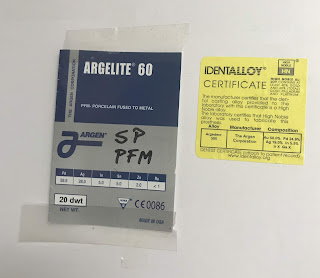Which endodontic technique do you use?
Of all the dental specialties, probably the most superstitious is endodontics. Each dentist performing root canals, endodontists included, have their own special recipe. Some use lateral condensation for obturation, some use warmed gutta percha technique and some just fill with one gutta percha point. Some use a zinc ocide and eugenol based sealer, some use epoxy based sealer and some use bioceramic sealer. I currently use a warm guttapercha vertical condesation technique to fill my root canals. The good news is when the root canal system is carefully disinfected and cleaned out using the proper irrigants, root canals work well better than 95% of time, regardless of which techniques are used. This can be part of the problem, since it leads to sometimes heated debates among dentists passionate about endo!
I have been using Kerr sealer to help fill voids and seal my root canals for years now and variations of this formula have been used successfully for over 100 years. It is easy and inexpensive to use and clinically causes few observable problems. The problem is that over time is washed out of the canal since it is water soluble and non vital teeth can be porous and moist in their dentin.
For years I have been reading about the wonders of alternative sealers, but experience has taught me to be careful about switching to new "wonder" products. I and many other dentists with "long dental memories" really are more comfortable with products that have a long clinical pedigree. The phrase "Once burned, twice shy" is an operating principal for many dentists who have been around the block several times.
Still we must accept changes in techniques if we want to improve and those changes that have been around for 10 years or more that seem to still be improvements are worth considering for our patients dentistry. Since my graduation in 1980 the materials and techniques I employ have constantly improved. It's a good thing since if I continued practicing exactly the way I was taught in dental school, I would not be providing my patients with a good service.
For the last two days I have been attending a workshop by one of my gurus in endodontics- Steve Buchanan, a gifted endodontist who practices in Santa Barbara,California. He happens not just to be an excellent clinician but also a great teacher, who is able to truly make endontics understandable and not just voodoo dentistry. I took one of his seminars in the late 1990s and I immediately started using rotary endo files and using a warm gutta percha condensation obturation. He had advocated Kerr Sealer ( a eugenol and Zoe sealer) and I have been dutifully using it ever since( with great success I might add).
He confided that he has recently switched to using a Biocermic sealers and has developed Bicoceeramic HiFlow one that can be used with his techniques with the help of Brasseler . He explained that he was waiting for them to be around long enough to justify switching over to a bioceramic sealer. These have the advantage of being non resorbable and can even be safely used to seal a single gutta percha cone fill, one that doesn't need additional points laterally condensed or warmed and condensed with vertical condensation.
My friend Steve Sloane, the local Brasseler NY territory manager ,partially sponsored this course and he showed me the rotary files and fitted gutta percha cones that they market which can be used to safely perform single cone obturation. The system he showed makes sense as well, but I must admit it just make performing root canals seem too easy! Basically the drills come in standardized shapes that match their cones and tend to fit the preparations quite precisely. Using their bioceramic sealer will should seal any small gaps between the walls of the preparation and the standardized guttapercha. In effect the points are really carriers for the sealer and when firmly placed and rotated slightly in the canal can force the sealer to coat and even get into lateral canals, without the use of system be warmed guttapercha downpacking.
This technique is simpler than the techniques that most endodontists employ, but may, if used with the proper shaping and irrigation techniques, achieve comparable results. Food for thought, since simpler techniques sometimes provide better "real world" results (K.I.S.S. rule).
from Ask Dr. Spindel - http://lspindelnycdds.blogspot.com/2018/11/which-endodontic-technique-do-you-use.html - http://lspindelnycdds.blogspot.com/


Comments
Post a Comment